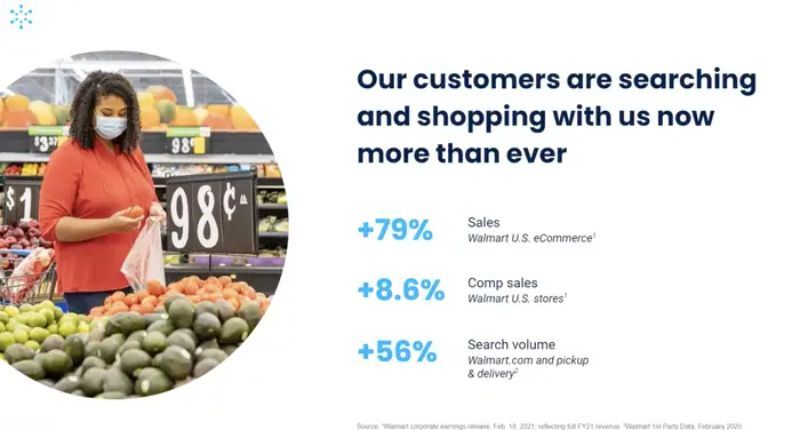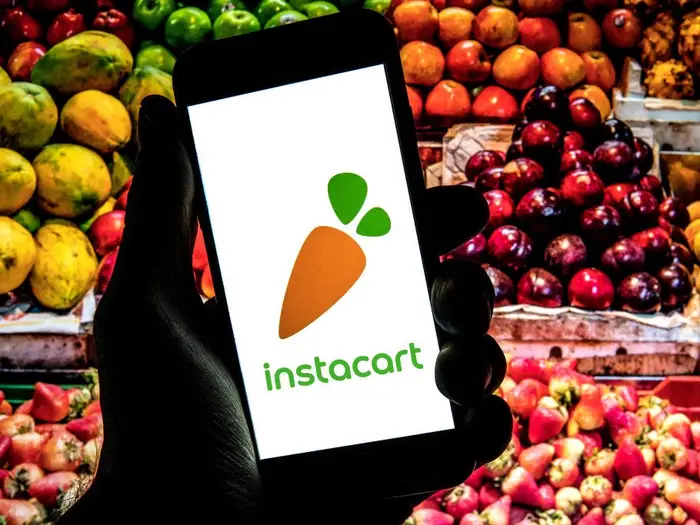- Retail has jumped on the ad-sales bandwagon, using shopper data to tap advertising’s high margins.
- A number of retailers are getting buzz as advertisers try to diversify their spending beyond Amazon.
- Insider asked more than a dozen advertisers which retailers they were most excited about.
This is the ninth in a 10-part series that examines Amazon’s booming advertising business: The people driving it, the ripple effects on other companies, and what’s next.
As Amazon’s ad business has soared, scores of other retailers have launched their own efforts to grab high-margin digital ad dollars — including big-box stores, such as Kroger; delivery services, such as DoorDash; and specialty chains, such as Ulta.
Amazon dominates the market, with $31 billion in advertising in 2021, leaving other companies to scramble for a slice of the remainder. An Insider Intelligence survey for its 2022 report on retail media networks’ perception benchmarks found that while 93% of ad buyers had used at least one retail media network, 62% had used three or less.
Still, other retailers could get a piece of the US e-commerce ad pie. Insider Intelligence, which shares a parent with Insider, projected that the pie would grow 31% this year to $41 billion as advertisers diversified their ad spending beyond Amazon.
Buyers like Walmart for its physical stores, first-party data, and self-serve platform. Target is appealing for its loyalty program, which provides individual shopper data that advertisers can use to personalize ads. And Instacart is generating buzz for its ad business as people do more grocery shopping online.
Retail platforms have three basic components: sponsored product ads that show up in search results; display ads that appear on retailers’ sites; and offerings that let brands and agencies use the retailers’ consumer data to target people around the web, said Diana Gordon, the SVP of e-commerce and marketplace strategy at the agency 3Q Digital.
Advertisers evaluate these platforms using several factors, including total sales volume, online and in-store traffic, data-analytics services, and the number of rival brands an advertiser would compete against on a given platform.
Insider spoke with more than a dozen ad buyers about which retail ad platforms they were most bullish on.

Walmart, which reported $2.1 billion in ad revenue in 2021, is the platform that comes up the most as having the greatest promise. Its almost 5,000 stores in the US and first-party data from its millions of customers give it a big advantage. It also has a self-serve platform that lets marketers place ads directly, giving it a leg up on other retailers that sell ads through third-party vendors.
Walmart got serious about its ad game in 2020, after taking its ad-sales operation in-house. Buyers said Walmart lagged Amazon in tech, but that’s changing. In 2021, it partnered with the adtech giant The Trade Desk to let advertisers target ads using its shopping data.
Walmart also finally shifted to a second-price model in online auctions, which is a more transparent way of awarding ad space because the final price buyers pay is determined by the second-highest bid. It’s something advertisers have wanted from Walmart for a while, considering it’s already used by other companies, such as Amazon and Instacart.
“Walmart is so far ahead of the game that it feels like the early days of Google,” said David Mahaffey, the senior director of ad operations at the digital agency Arm Candy.
On the downside, Walmart said its data could show whether someone bought a product after seeing an ad, but buyers said it lagged Amazon’s campaign-reporting abilities and ability to tie ads to in-store purchases.
Target
After Walmart, Target is the second most prominent big-box retailer competing for ad dollars, buyers said.
Target, with almost 2,000 US stores, was way ahead of competitors when it rolled out its ad business, Roundel, in 2007. It now employs 500 people and brought in $1 billion last year.
Advertisers consider Target’s secret weapon to be its loyalty program, which provides individual shopper data that can be used to personalize ads. Target’s data can also be used to target online ads outside its own properties, which gives it an advantage over other retailers, Gordon said. And like other big ad platforms, Roundel incentivizes ad buyers with credits.
“This lets us reach people at different phases of their purchase journey, and it’s more predictive than retargeting,” Gordon said.
At the same time, Target has not promoted its ad product as aggressively as Walmart as it focuses on customer experience features, such as a service to let people order online and pick up in-store, said Elizabeth Marsten, the director of strategic marketplace services at Tinuiti.
Another common sticking point raised is that Target, like other retailers, cannot yet link ads to sales of individual products in-store. Amazon has been testing this option with Whole Foods stores. For example, Arm Candy can now connect an ad buy with the sale of a single carton of milk, Mahaffey said.
A Target spokesperson said the company introduced programmatic advertising, closed-loop measurement, and self-service performance tools to Roundel in recent years and planned to keep improving its ad products and personalizing the shopping experience.
Instacart

Instacart, which has nabbed high-profile Amazon and Meta vets to build its ad business, is the popular recent addition to e-commerce advertising.
Mohammad Haque, the SVP and group director of SEM for the IPG media agency Mediahub, saw Instacart as attractive to grocery and advertisers of consumer packaged goods because more people are buying groceries online.
Liquor brands are particularly interested in spending with Instacart in states that allow liquor delivery. It recently passed Drizly to become the top online liquor retailer.
But Instacart has some flaws. As a pure online grocer, it can’t provide data about in-store sales or tie ads to in-store sales because it doesn’t share data collected by its retail partners. And its big-city focus makes it hard for advertisers to reach people in smaller markets, buyers said.
“Unless Instacart has a unique feature they can sell, they’re just a middleman,” said Yves Le Breton, global head of e-commerce at Oliver Agency.
Le Breton said Instacart’s ads also cost more than those of other retail platforms that have physical stores.
Kroger
With almost 3,000 stores, Kroger stands out among packaged-goods advertisers because of its foothold with grocery shoppers, self-serve ad-sales platform, and widely used loyalty-card program that can track whether people bought a product as a result of seeing an ad.
“99% of in-store transactions are tied to the loyalty card. That creates the digital breadcrumb trail for in-store purchases, so you can build a deterministic match in terms of ads driving sales, even if the customer uses cash,” Gordon said.
Last year, Kroger upped its game with a new tool that lets advertisers use its first-party data to target people around the web and track things such as new buyers and sales lift.
Advertisers can also pinpoint people who buy online and pick up in-store, a lucrative demographic because those people tend to buy more when they go into a store to pick up an order, Le Breton said.
Kroger also gets points for having service teams that work well with ad agencies. “They also know the media lingo well, so they’re a grade above others,” said John Lods, Arm Candy’s CEO.
On the downside, its stores are primarily located in the southeastern and central states, leaving out tens of millions of shoppers. As a grocery chain, Kroger doesn’t sell almost as many brands as Walmart or Target, and advertisers also need a strong presence in Kroger’s physical stores to take advantage of its ad services, Marsten said.
Gopuff

Also drumming up big advertiser excitement is Gopuff, the $15 billion food-delivery startup that has been hailed as the e-commerce Costco and just introduced its ad platform last year.
Among its selling points: Advertisers can target shoppers with ads on Gopuff’s app, as well as on other sites through an ad network, and people only see ads for products that are available nearby.
Jessica Richards, the North American EVP and managing director of commerce at Havas Market, likes Gopuff because it’s growing in urban centers, and its acquisition of BevMo makes it appealing to advertisers of alcoholic beverages.
Gopuff also stands out from rivals, such as Instacart, Getir, and Gorillas, in that it owns all the products it sells, which can make its ad prices favorable and give advertisers more data on consumer behavior, Le Breton said.
“It’s very similar to Instacart, but it’s cleaner for clients because you can tie spend directly to sales, and they share lots of information, while Instacart doesn’t,” Le Breton added.
Home Depot
Home-improvement chains aren’t as competitive for advertising as Walmart, but they’re relevant to advertisers in the DIY category.
Home Depot has the head start, launching its advertising business in 2019, two years ahead of Lowe’s. It gives advertisers a variety of ways to reach consumers, including its app, email blasts, and promotions through Google Shopping. It also prepackages audiences for advertisers, which can lead to less precise targeting options, Marsten said .
To truly stand out, though, Home Depot must refine its data offering and move beyond its kitchen-sink pitch to advertisers.
“They have a huge menu of services. It’s both freeing and paralyzing,” Marsten said.
“We work with advertisers to reach customer groups who might be interested in their products by offering aggregated and deidentified first-party data sets of audience segments,” a Home Depot spokesperson said in an email. “These audiences are classified by if the customer looks like a DIYer or professional contractor, and what kind of products or projects they might be interested in (i.e. new home owners, pros, etc.). We respect our customers’ privacy rights, and so we aggregate and deidentify the information made available so that advertisers cannot individually identify or link back to respective customers.”
Best Buy
Best Buy launched an in-house ad business in January with help from the adtech firm Criteo to sell a variety of ad formats on its site and beyond.
Its big advantage is scale: Best Buy has more than 1,000 stores in the US and Canada, and it says it processes 3 billion consumer transactions every year. It also has two loyalty programs that provide data on consumers. One, Best Buy TotalTech, has a paid-subscription model and makes Best Buy a natural choice for consumer-electronics brands, Le Breton said.
Other selling points: Best Buy lets advertisers send push notifications to people who use its app when they enter a store, and unlike most retailers, its shoppers skew toward the hard-to-reach male demo, Marsten said.
Macy’s and Ulta
Macy’s and Ulta aren’t the biggest game in town, but they play well to cosmetics brands, with their loyalty programs that provide access to consumers.
Macy’s gets points with advertisers for its wide array of ad formats and low ad load, as well as for serving advertisers better than other big retailers, while Ulta has a partnership with Target that lets advertisers pinpoint ads to subgroups, such as people who buy Black or male-focused beauty products.
Ulta said it planned to update its retail media network this year to give advertisers new ways to reach customers using its rewards program.
“UB Media’s unique data and insights will create new opportunities for brands to hyper-focus advertising efforts and drive meaningful, measurable returns within an ecosystem that is dynamic and personal,” said Brent Rosso, the VP of Ulta Beauty Media.

